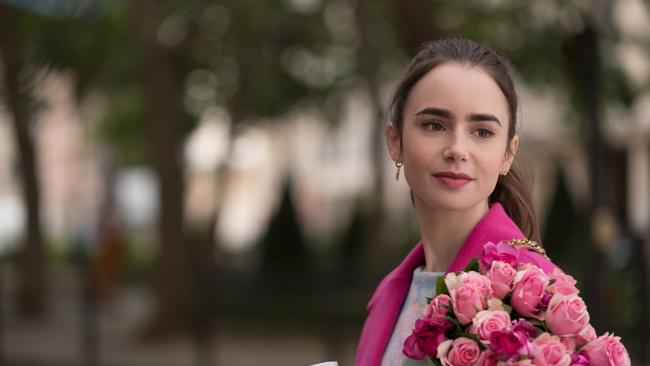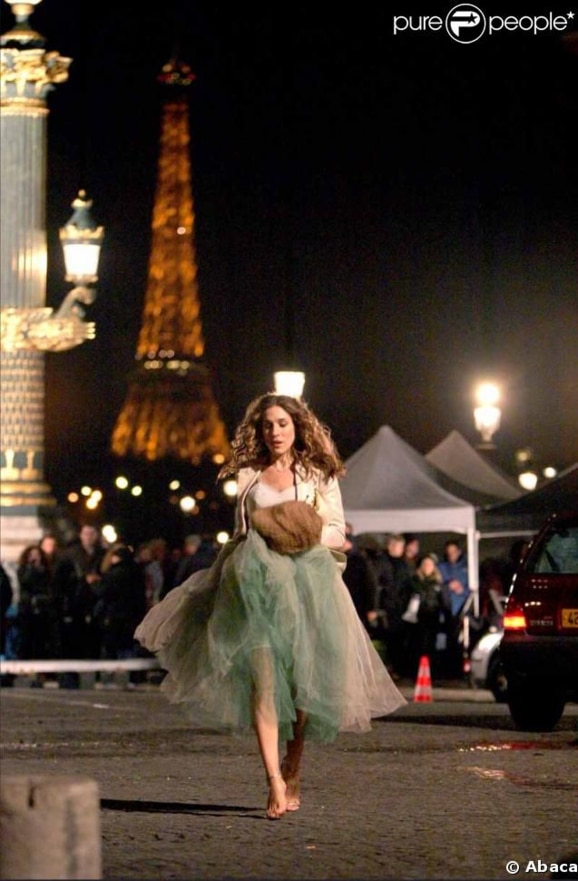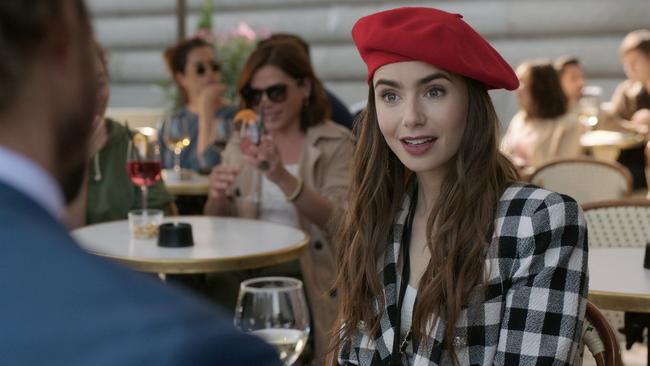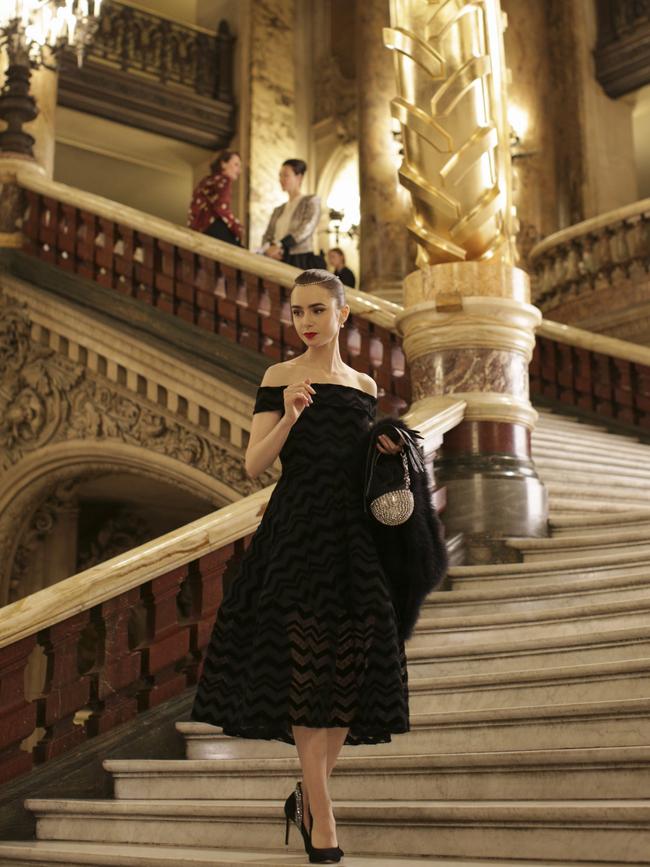Emily in Paris follows in Sex and the City’s fashionable footsteps
Forgive the cliches — or drink to them. TV genius Darren Star knew exactly what he was doing with his latest hit.

We don’t know if he possesses a secret almanac from the future or if it’s some sort of witchcraft but Darren Star, the TV genius behind cult hits Sex in the City and Younger has done it again.
Sex in the City, which collided with Manhattan’s late 20th century renaissance, divulged nascent New York City secrets; (Magnolia bakery the Meatpacking District, brunch …), said the C-word on prime time and had a chain-smoking main character who pops briefly over to France, only to realise there’s no place like home and return to the bosom of her friends.
By the end of its six seasons (and two movies) the show had totally contradicted its feminist empowerment message, Carrie had all but quit smoking and the C-word had stopped being cool again so let’s move on to 2015 when Star birthed Younger.
Now in its fifth season, Younger is ostensibly about ageism although, as Carrie did, its lead character spends most of her time mooning over men. Nonetheless, the show plays brilliantly to a generation waking up to realise the digital revolution had left it on the wrong side of an invisible workplace language barrier.

Speaking of language barriers, voila, Star’s newest TV creation, Emily in Paris.
Unlike Carrie, this main character doesn’t smoke and when she arrives in Paris, she stays. Later we learn she didn’t like her American friends that much anyway.
The show’s detractors have complained chiefly about all the cliches. It’s true, Emily in Paris is absolutely stacked with them. Knowingly, of course. That’s the whole point. There’s almost not enough time in each 30 minute episode for all the stereotypes and by the end of season one we’re practically drunk on them.
Actually, that’s a fun idea: play an Emily in Paris drinking game where you have to shoot tequila every time you see a stereotype and you won’t stay upright long. Include the cliches about Americans and crazy rich Asians and you’re liable to end up in hospital.

Eponymous heroine Emily Cooper (how’s that for an American-as-apple-pie name) is a junior employee at a big marketing firm stateside who is dispatched to Paris with very little notice to work with a newly acquired French subsidiary. Her precise brief — how good is this — is to impart “the American perspective” and here’s the twist, she doesn’t speak French.
Sacre bleu! How can this happen? (asks every French character at least once upon meeting poor, beautiful Emily, whose dress sense is as out there as her viral marketing ideas).
Mais non, this isn’t some badly thought out plot hole. It’s a very clever premise by a TV savant, and once that floodgate opens cliches gush forth becoming more absurd and increasingly hilarious until, on a weekend drinking champagne at a chateau in, yes, Champagne, Emily beds a boy whom, unbeknown to her, is aged 17.
And when this becomes benownst to his mother, well, maman’s concern is not for the possibly predatory act committed on her son, but, she earnestly wants to know; is her son a good lover? Emily is aghast at her inquisitor and to be fair, horrified at herself, but she nonetheless hops into a cute convertible — and one of Star’s signature love triangles — and by now we’re squealing with laughter and sighing ‘it’s all so deliciously French!’ and, ‘oh well, it’s only midnight. One more episode can’t hurt …’ Je regrette rien

Emily’s Paris is a fairytale. Occasionally she steps in dog shit, literally and metaphorically. But, as she would say multiple times in an episode to the extreme annoyance of her co-workers (whom, it would appear, are played by actual French people), c’est la vie!
Sex in the City made New York City a cliche. (Magnolia Bakery is now a chain store). The Paris of American film and TV was already a cliche. Star’s simple trick was to double down.
Paris, and France more broadly, is a nation of invisible rules and sacred libertarianism. Its indiosynchracies delight tourists and obsess expatriates who make them homes there but for the French it is simply the way of life.
Except of course, right now life isn’t really recognisable to the French, or anyone. In the midst of a global pandemic, many borders are shut them. Here in Australia, ours are closed to most of the world. We don’t travel on the Eurostar, alighting at Gare du Norde. We don’t stay in a cute little three-star in the 4th or maybe the 5th. We don’t eat croissants and crepes and shop the market and wander over the Pont Neuf or through the Jardin de Luxembourg. Right now, Paris fashion means masks.
The FT newspaper reports that Emily in Paris is a hit among the French, who concede many of the stereotypes in it and are content to devour this rose-coloured view of their most storied city.
Pre-pandemic, Emily in Paris might have landed as an amusingly self-referential, post-meta plate of eye-candy.
Today, and this is Star’s far greater trick, it serves up bottled Zeitgeist to a confused, tired, fearful — and yet somehow also bored — world, and so helps to fix in us a bit of what 2020 has broken.
Bring on Season 2. And pass the tequila.


To join the conversation, please log in. Don't have an account? Register
Join the conversation, you are commenting as Logout